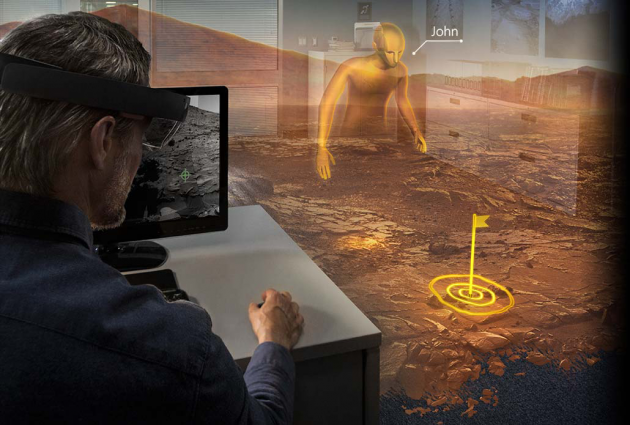Microsoft Introduces HoloLens Holographic Goggles: Might Be The Best Device of 2015
Microsoft has once again impressed the world, and this time they did it with very little warning at what was expected to be an event all about Windows 10. It just so happens that Windows 10 will be able to run not only on almost all of your existing devices (in theme with blossoming "Internet of Everything" movement), the new operating system will also run on Microsoft's awesome new holographic goggles called the HoloLens. We'll tell you more about it once you're done picking up your jaw after watching this amazing product trailer for the device:
As you can see, this is really, really big stuff. This one product could change the way we view and interact with our environment and other people. It could literally change everything, from communication to games to architecture. Seeing the video above, and realizing the potential, it appears highly likely that holographic technology will play a key role in innovation in the 21st century. Although there's no word yet on the device's official release date, Microsoft has stated that it would like to get HoloLens into the hands of developers by the Spring of 2015, so we should see it on shelves within the next year or so. In the meantime, here's what we know about it:
Not “Real Holograms,” But Probably as Close as We'll Want to Get
If you've had a chance to scroll through the comments below the YouTube video embedded above, you might notice that there are numerous skeptics bashing Microsoft for using the terms “hologram and holographic” to describe a product that does not actually create “true” holograms.
While the HoloLens goggles don't actually project holograms into the physical world in front of you (as you've probably seen in movies), they do accurately simulate the hologram experience by 3D mapping the world around you and then projecting holographic images onto an HD display in front of you, thereby creating the appearance that the projections are true-to-life holograms in front of you.
Just how realistic is the holographic imagery generated by HoloLens? Well, when Jess Hempel (an editor at Wired) got the chance to do an exclusive hands-on test drive of the latest prototype, she said her legs literally began to quiver when she attempted to walk on the virtual Mars landscape that was inserted into her reality in front of her unbelieving eyes. Her legs apparently didn't trust her vision while she was under the influence of a device capable of generating some of the most amazing optical illusions ever seen.
If you think about it, the fact that only the wearer can see the holographic images seems to be a benefit, so despite the fact that many critics have been complaining about Microsoft using the word “hologram” as a misnomer, this type of device is probably the most practical method of holographic projection that will reach the mainstream, because it can be used without disturbing other people, while still providing all of the same visual benefits you would achieve by projecting an actual hologram into the room.
The Next Step Up From Kinect
 Seven years ago, Microsoft's chief inventor in Studio C, Alex Kipman (creator of Kinect), originally pitched the idea for holographic goggles to the company with a big dream in mind. That project then became Kinect, a motion-sensing accessory for the Xbox that turned out to be the fastest-selling gaming device of all-time. Kipman has been working on the HoloLens goggles for the past five years.
Seven years ago, Microsoft's chief inventor in Studio C, Alex Kipman (creator of Kinect), originally pitched the idea for holographic goggles to the company with a big dream in mind. That project then became Kinect, a motion-sensing accessory for the Xbox that turned out to be the fastest-selling gaming device of all-time. Kipman has been working on the HoloLens goggles for the past five years.
The link between the technology in Kinect and HoloLens is integral. The HoloLens goggles are fitted with a special processing unit that uses the same spatial scanning technology used in the Kinect to map out the world around you and insert HD imagery into different distances in your field of vision, thereby generating the optical illusion that the images are actually existing in the real word.
Augmented Reality, Virtual Reality, or Mixed Reality?
The general consensus seems to be that the HoloLens is an augmented reality (AR) device, and that certainly seems to be what Microsoft is marketing it as – a tool to help you integrate cyberspace into the physical world around you. However, by true definition, the HoloLens seems to be closer to a mixed reality device, as it incorporates aspects of both virtual reality and augmented reality, and technically it could be used for both, depending on the application ran by the user.
In other words, the HoloLens can easily cover the viewer's entire field of vision with an immersive 3D landscape, thereby creating a virtual reality (as the case was with the aforementioned Mars landscape shown in Wired). As such, the user will get to choose whether the device is used to augment their reality or transform it altogether.

